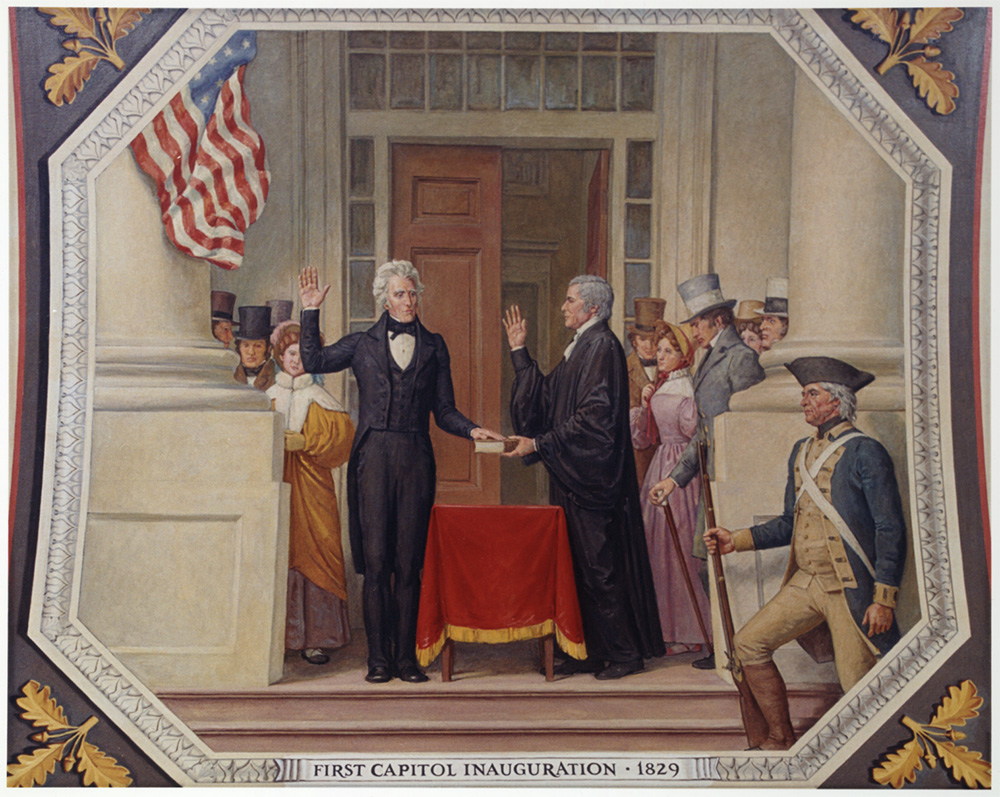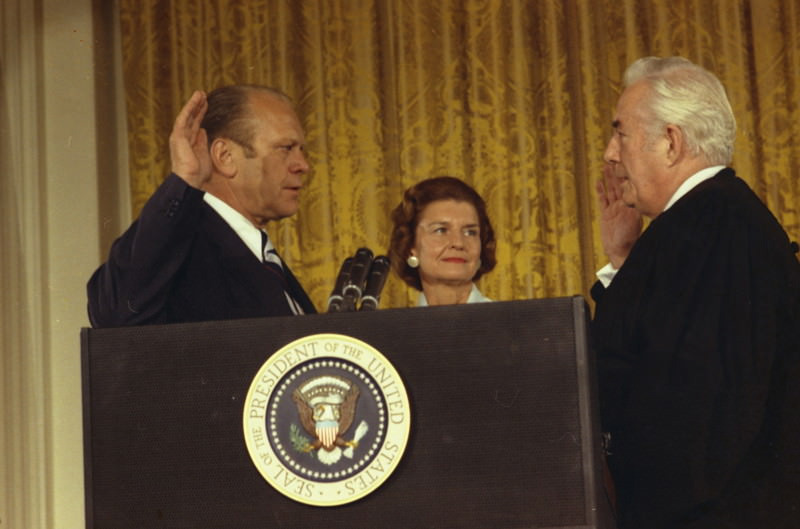
With the inauguration ceremony this week of President Joseph R. Biden, who will be sworn in by Chief Justice John G. Roberts, we look back at the venerable tradition of chief justices administering the oath to incoming presidents. While Article II of the Constitution requires the president to take an oath at the beginning of his term, it does not identify the person or officer who is to administer the oath. The tradition of inviting the chief justice began when John Adams became president in 1797 and Chief Justice Oliver Ellsworth swore him in. The previous two chief justices, John Jay and John Rutledge, missed out on the opportunity to preside at an inauguration. The Supreme Court had not yet been created in April 1789 when the nation’s first president, George Washington, was sworn in at Federal Hall in New York City; Jay would not be appointed chief justice until October. Robert Livingston, a state official, administered the first presidential oath. For Washington’s second inauguration in 1793, the president asked Associate Justice William Cushing to do the honors at Congress Hall in Philadelphia in a noontime ceremony. In an effort to keep the ceremony unpretentious and low key, the administration selected Cushing, instead of Jay, because the former had been presiding over the circuit which encompassed Pennsylvania. Rutledge only served as chief justice for five months in 1795, which did not coincide with a presidential election.
The tradition of the chief justice swearing in the president in Washington D.C. became firmly established when John Marshall administered the oath of office to Thomas Jefferson in 1801 in the new Capitol building. Chief Justice Marshall would administer the oath eight more times; his successor Roger B. Taney administered it seven times. (At nine and seven, they hold the presidential inauguration record among chief justices).
Since Ellsworth, no chief justice has missed an oath of office ceremony on a scheduled Inauguration day. But there have been five times when the chief justice did not administer the oath on the occasion of the vice president being hastily sworn in after the untimely death of the president. William Cranch, chief judge of the U.S. Circuit Court in the District of Columbia, swore in John Tyler as president in 1841, and Millard Fillmore in 1850, after Presidents William Harrison and Zachary Taylor died of illness while in office. When President William McKinley was shot in 1901, U.S. District Judge John Hazel (Western District of N.Y.) quickly administered the oath to Theodore Roosevelt in Buffalo. News of President Warren Harding’s sudden death in 1923 reached Calvin Coolidge at his cabin in Vermont, where his father, John Coolidge, who was a notary public and justice of the peace, swore him in. Worried that the legitimacy of the oath ceremony might be questioned because it was administered by a relative, Attorney General Harry M. Daughtery, asked district court judge Adolph A. Hoehling of the Supreme Court of the District of Columbia to secretly swear in Coolidge again when the new president returned to Washington. Finally, U.S. District Judge Sarah Hughes (Northern District of Texas) swore in Lyndon Johnson on Air Force One in 1963 after President John Kennedy was killed.
Four vice presidents did benefit from the participation of the chief justice at their presidential inaugurations. On April 15, 1865, the day after President Abraham Lincoln was shot, Chief Justice Salmon P. Chase swore in Andrew Johnson at Kirkwood House, the vice-president’s residence on Pennsylvania Avenue. Vice President Chester A. Arthur was hastily sworn in by New York Justice John R. Brady in 1881 at Arthur’s New York home after receiving word of President James Garfield’s death, also the result of an assassin’s gun. Two days later, Arthur took the oath again in public, this time administered by Chief Justice Morrison R. Waite at the Capitol. In April 1945 after FDR died of a cerebral stroke, Chief Justice Harlan Fiske Stone hastily swore in former vice president Harry S. Truman at the White House.

Most recently, Chief Justice Warren E. Burger swore in Gerald Ford on August 9, 1974 in the East Room of the White House at 12:05 p.m., thirty minutes after President Richard M. Nixon officially tendered his resignation and departed by helicopter. While Chief Justices Chase and Stone had both conveniently been in town, the Air Force had to fly Chief Justice Burger back from the Netherlands, where he was attending a conference. When Nixon had publicly announced his intention to resign the day before, Vice President Ford called the head of the judiciary and asked him to administer the presidential oath persoanlly, given the unusual circumstance of a presidential resignation. “I’ve got to be there. And I want to be there” Burger told Ford before flying all night.




